Spatial-Temporal Lineage Restrictions of Embryonic p63+ Progenitors Establish Distinct Stem Cell Pools in Adult Airways
- PMID: 29587145
- PMCID: PMC5875454
- DOI: 10.1016/j.devcel.2018.03.001
Spatial-Temporal Lineage Restrictions of Embryonic p63+ Progenitors Establish Distinct Stem Cell Pools in Adult Airways
Abstract
Basal cells (BCs) are p63-expressing multipotent progenitors of skin, tracheoesophageal and urinary tracts. p63 is abundant in developing airways; however, it remains largely unclear how embryonic p63+ cells contribute to the developing and postnatal respiratory tract epithelium, and ultimately how they relate to adult BCs. Using lineage-tracing and functional approaches in vivo, we show that p63+ cells arising from the lung primordium are initially multipotent progenitors of airway and alveolar lineages but later become restricted proximally to generate the tracheal adult stem cell pool. In intrapulmonary airways, these cells are maintained immature to adulthood in bronchi, establishing a rare p63+Krt5- progenitor cell population that responds to H1N1 virus-induced severe injury. Intriguingly, this pool includes a CC10 lineage-labeled p63+Krt5- cell subpopulation required for a full H1N1-response. These data elucidate key aspects in the establishment of regionally distinct adult stem cell pools in the respiratory system, potentially with relevance to other organs.
Keywords: H1N1; airway progenitors; basal cells; influenza A; lineage tracing; p63; stem cell.
Copyright © 2018 Elsevier Inc. All rights reserved.
Conflict of interest statement
The authors declare no competing interests.
Figures
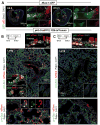
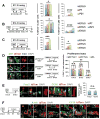
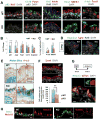
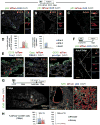
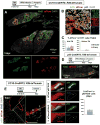
Comment in
-
Basal Cells in Lung Development and Repair.Dev Cell. 2018 Mar 26;44(6):653-654. doi: 10.1016/j.devcel.2018.03.004. Dev Cell. 2018. PMID: 29587138
Similar articles
-
p63(+)Krt5(+) distal airway stem cells are essential for lung regeneration.Nature. 2015 Jan 29;517(7536):616-20. doi: 10.1038/nature13903. Epub 2014 Nov 12. Nature. 2015. PMID: 25383540 Free PMC article.
-
Rare SOX2+ Airway Progenitor Cells Generate KRT5+ Cells that Repopulate Damaged Alveolar Parenchyma following Influenza Virus Infection.Stem Cell Reports. 2016 Nov 8;7(5):817-825. doi: 10.1016/j.stemcr.2016.09.010. Epub 2016 Oct 20. Stem Cell Reports. 2016. PMID: 27773701 Free PMC article.
-
P63 deficiency: a failure of lineage commitment or stem cell maintenance?J Investig Dermatol Symp Proc. 2005 Nov;10(2):118-23. doi: 10.1111/j.1087-0024.2005.200416.x. J Investig Dermatol Symp Proc. 2005. PMID: 16363063 Review.
-
Critical role of p63 in the development of a normal esophageal and tracheobronchial epithelium.Am J Physiol Cell Physiol. 2004 Jul;287(1):C171-81. doi: 10.1152/ajpcell.00226.2003. Am J Physiol Cell Physiol. 2004. PMID: 15189821
-
Basal-like Progenitor Cells: A Review of Dysplastic Alveolar Regeneration and Remodeling in Lung Repair.Stem Cell Reports. 2020 Nov 10;15(5):1015-1025. doi: 10.1016/j.stemcr.2020.09.006. Epub 2020 Oct 15. Stem Cell Reports. 2020. PMID: 33065046 Free PMC article. Review.
Cited by
-
Airway basal stem cells generate distinct subpopulations of PNECs.Cell Rep. 2021 Apr 20;35(3):109011. doi: 10.1016/j.celrep.2021.109011. Cell Rep. 2021. PMID: 33882306 Free PMC article.
-
Identification of a Novel Subset of Human Airway Epithelial Basal Stem Cells.Int J Mol Sci. 2024 Sep 12;25(18):9863. doi: 10.3390/ijms25189863. Int J Mol Sci. 2024. PMID: 39337350 Free PMC article.
-
hPSC-derived lung organoids: Potential opportunities and challenges.Heliyon. 2023 Feb 4;9(2):e13498. doi: 10.1016/j.heliyon.2023.e13498. eCollection 2023 Feb. Heliyon. 2023. PMID: 36814627 Free PMC article. Review.
-
Abnormal respiratory progenitors in fibrotic lung injury.Stem Cell Res Ther. 2022 Feb 7;13(1):64. doi: 10.1186/s13287-022-02737-y. Stem Cell Res Ther. 2022. PMID: 35130980 Free PMC article. Review.
-
Stem cell therapy: a novel approach against emerging and re-emerging viral infections with special reference to SARS-CoV-2.Mol Biol Rep. 2023 Mar;50(3):2663-2683. doi: 10.1007/s11033-022-07957-2. Epub 2022 Dec 19. Mol Biol Rep. 2023. PMID: 36536185 Free PMC article. Review.
References
-
- Daniely Y, Liao G, Dixon D, Linnoila RI, Lori A, Randell SH, Oren M, Jetten AM. Critical role of p63 in the development of a normal esophageal and tracheobronchial epithelium. Am J Physiol Cell Physiol. 2004;287:C171–C181. - PubMed
-
- Guhar A, Deshpande A, Jain A, Sebastiani, Cardoso WV. Uroplakin 3a+ cells are a distinctive population of epithelial progenitors that contribute to airway maintenance and post-injury repair. Cell Reports. 2017;19:246–254. - PubMed
Publication types
MeSH terms
Substances
Grants and funding
LinkOut - more resources
Full Text Sources
Other Literature Sources
Medical
Molecular Biology Databases
Research Materials
Miscellaneous

